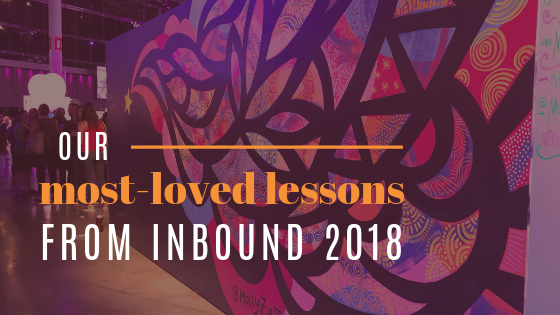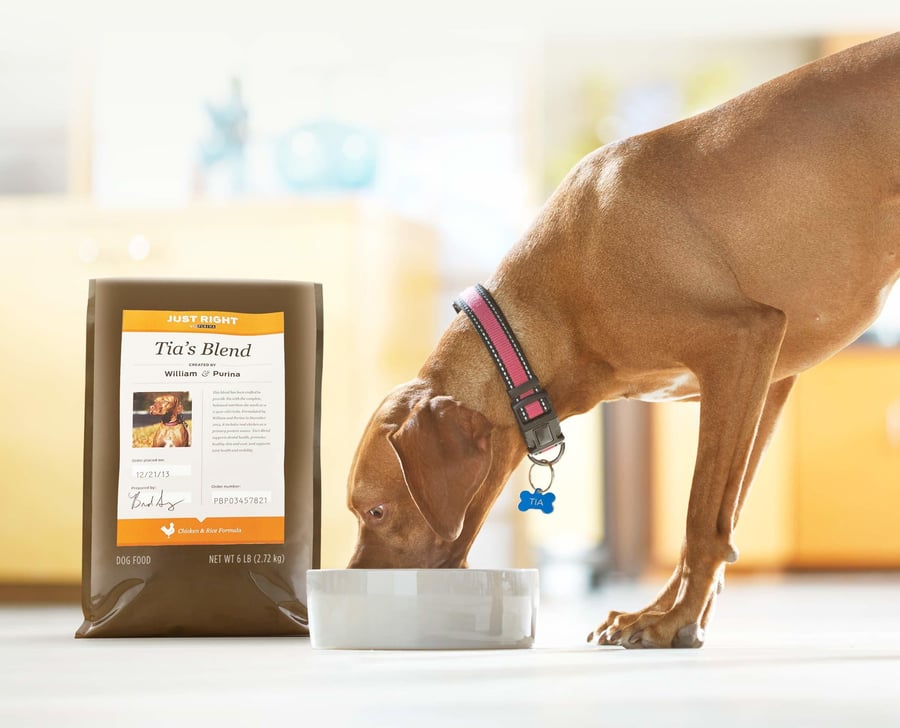Our Most-Loved Lessons from INBOUND 2018

We’ve finally calmed down enough from the post-excitement of INBOUND 2018 to gather our thoughts and compile our favorite takeaways from this year’s conference. It was certainly a year to remember—from Deepak Chopra leading a powerful group meditation to a breakout session that ended with free beer (thanks, Harpoon!) to many representations of girl bosses kicking butt. Read on for easy-to-digest summaries of the most important knowledge nuggets we brought home from Boston.
Recap #1: The Neuroscience of Engagement
Gave by: Carmen Simon, Cognitive Neuroscientist
Attended by: Kelly McEvitt, Senior Account Manager
In a highly anticipated session about how the brain works with content engagement, Carmen Simon discussed how the brain makes decisions. Memory is always involved, and if we forget, it’s because we didn’t pay attention to begin with. The key to not forgetting (or not letting our audience forget)? Engage the user. She gave three key ways to positively impact situational boredom:
1. Variety
If we vary the stimulus frequency, we keep the brain from habituation. Our brains feel like they constantly need to be fed (and fed new and exciting things), so investigate your level of stimulation in marketing materials. Look at the pattern of your email, video, social media, etc. How could you give your audience an element of surprise?
2. Challenge
Give the user a challenge, meaning a heightened state of engagement. Provide opportunities for deeper or more elaborate thinking, allow them to stretch intellectually, or add a creative dimension. The easiest form of engagement is the act of asking and answering questions—how can you incorporate some of those? (Hint: it’s pretty simple.)

3. Complexity
Less is often not more. What is boring? Simplicity, artificial, concrete, decontextualized. What is not boring? Novelty, authenticity, abstract, open-ended, high level of thinking, rich in context. Give your audience the joy of getting something more—purpose, self-actualization, relationships, stories, satisfaction. Focus on a path that brings people joy.
Recap #2: Bridging the Gap Between Brand and Experience Design
Gave by: Adrian Ho, Founding Partner & CEO, Zeus Jones
Attended by: Meredith Cook, Senior Digital Designer
As we barrel down the road towards an ever-moving, always-connected world, branding and experience design are converging. Branding, as it is now, never stays still—the Internet has evolved the business world into a massive community that emphasizes experience and collaboration over a static color, phrase or thought.
This of course means that the buyer journey is also changing from a more concrete, linear model to a network in which the buyer may not pass through each stage of the journey before purchasing. What does this mean for us? Great brand experiences need to capture the entire buyer’s journey into a single moment. It’s important to capture the buyer in whichever stage they might be.
Adrian Ho gave us a few tools for building modern brand experiences:
1. Experience principles
Rethink your brand positioning. Using a case study for a healthcare organization, Ho explained how Zeus Jones reimagined the branding for the hospital network as a place where people can go for a wide range of needs. They repositioned the brand away from being the destination for simply "fixing" an ailment and turned it towards where to grow one's health to be the best they can be.
2. Branded layers
You can wrap an experience with a layer of branding that doesn't change the core of the experience itself, but changes the emotional value. In his case study for Beats Pulse headphones, Ho discussed how his agency used the different layers of Beats branding to convey a unique message. Rather than advertising the quality or capability of the headphones for music consumption, they emphasized the brand element of free expression—and ended up making a really cool commercial out of it.
3. Emotional marker moments
By invoking bits of emotion into experiences, the entire brand is completely changed. To demonstrate, Ho touched on a campaign that the agency did for Purina. Zeus Jones helped them create a line called "Just Right" where dog owners could go online and plug in information about their beloved pooch (weight, coloring, age, energy level, favorite toy, etc.), then a couple of weeks later, they would receive a custom blended food—complete with their dog's name and photo on it. The level of personalization for this example is pretty spectacular, and it performed quite well for Purina.

Image: Zeus Jones
Combined Takeaways: Be Yourself
One of the overarching themes that Kelly and I both gathered from our sessions at INBOUND was the revived emphasis on passion and authenticity. Rather than getting lost in the narrow view of conversion goals, headlines for clicks over humanity, and societal “rules,” many speakers stressed that straightforward, real, and emotional values are more paramount than ever in marketing and leadership.
Saleema Vellani, co-founder & COO of Innovazing, gave us actionable advice on increasing our influence and impact through innovative leadership. She challenged us to consider what we, as leaders, are truly passionate about—as well as what members of teams we might be managing want their legacy to be. But how can we do that? These three tips sum it up:
1. Step into your own shoes. It’s easy to get lost in the daily routine and forget to ask yourself what you care about. How does that connect to what you’re doing?
2. Be resilient. Learn how to recharge and rise up.
3. Follow your gut. What are your limiting beliefs? Common limiting factors are ability (I’m not good enough), time (I’m too busy), impression you give off (lack of confidence). Own your path.
In another talk that felt like more like a really great chat with a friend, Kali Roberge, founder of Creative Advisor Marketing, taught us how to “supercharge” our marketing by being our true, authentic selves (both personally and professionally). She centered her session around a case study for a financial planning firm that was struggling to find loyal clients using traditional content marketing. Generic tweets and blog posts about maximizing your 401k weren’t communicating the firm’s specific value, and therefore the firm wasn’t attracting any real interest (no pun intended). Her process started with defining “authenticity” for the firm:
- What do they believe?
- What change do they exist to make?
- Who do they aim to change?
- What promises do they make?
She had already learned what didn’t work: speaking generally, writing something that could be found in an encyclopedia, and communicating something without a story or emotion. So what did work? Sharing stories. She started creating content that offered value to people without an agenda of converting attached to it. She shared images of the firm’s employees as real humans and wrote articles like “How We Save 30% of Our Income” (as opposed to “How to Save 30% of Your Income”). She tweeted and blogged without using a CTA (gasp!) and utilized zero paid advertising efforts. And it worked! The firm saw a 42% increase in traffic, 25% decrease in bounce rate, 31% increase in revenue, and 100% increase in new clients.
The main lessons here: consistently be the same way no matter who's watching. Why would you need to change who you are? Dig into that. Do and say what you believe, not what you think you “should” do. Being differently authentic serves as a signal in the noise. Share what matters in a real, raw, human, vulnerable way. Humans make choices based on emotions, beliefs, and stories—what will be yours?

September 26, 2018